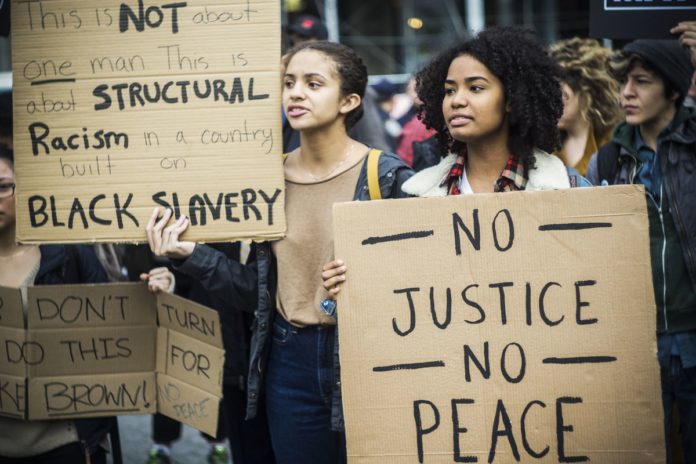According to LSU President William Tate, author of the much-acclaimed Toward a Critical Race Theory in Education, CRT is not something to be taught to the undergraduate student. It is a “framework used in law school and in PhD’s education to better understand how laws are formulated and the influence of law on everyday life.” This is important to understand, as elementary schools are increasingly being exposed for using CRT as a means of indoctrinating young children into the tenants of racial identity politics. Liberals claim that CRT is not being taught in public school and that it is only used in higher education. To a degree, they are telling the truth. Critical Race Theory is a tool being used by those who develop educational curriculums for public school students. Students in fifth grade, for example, are not being taught Critical Race Theory, it is being used as a model for how to teach kids about racial inequalities and America’s so-called, racist past. Critical Race Theory trickles down from the halls of academia, where resentful scholars have nothing better to do than find racism where none exists. CRT scholars insist on the deconstruction of American society on the misguided notion that it exists solely for the betterment of the white man. Despite America’s history of freeing the slaves and adapting a color-blind approach to equal treatment under the law, CRT scholars still find ways to label mainstream America as a racist society. This begs the question. What do proponents of Critical Race Theory really want?
Critical Race Theory, while becoming the new focal point of attention for many parents across the country, goes all the way back to the 1970s (Delgado & Stefancic, 2017, p. 4). It was established by prominent Marxist thinkers as a legal theory for addressing the systemic inequalities the civil rights movement – in their view – failed to correct. Deriving from Critical Theory, CRT seeks to challenge the traditional notions of western civilization and the basic principles America was founded on. Equal rights, neutral principles of constitutional law, and enlightenment rationalization (Delgado & Stefancic, 2017, p. 3) are all considered to be white constructs that keep minorities oppressed and unable to live up to their true cultural identities. Anti-racism scholars draw from other Marxist-inspired theories like radical feminism (Delgado & Stefancic, 2017, p. 5), where prominent liberal heroes like Betty Friedan offered insights into America’s patriarchal power structures, and the construction and maintenance of oppressive social roles in American society. Other influential Communist writers, like Antonio Gramsci, were instrumental in CRT’s development (Delgado & Stefancic, 2017, p. 5) as his theories on counter-hegemony led to the creation of multiple oppressed groups, all claiming white supremacy as their oppressor. Critical Race Theory is being used by Latino Groups, Asians, Muslims, and even LGBT groups as a framework for advancing their interests (Delgado & Stefancic, 2017, p. 3) while addressing systematic inequalities they claim are inherent in America’s legal system.
Critical Race Theory scholars sit at the top of the educational institutional hierarchy with nothing better to do than find racism behind every corner. Their purpose is a complete, fundamental transformation of American society. Its use in public schools is to create a nation of future activists who operate under the belief that America, at its core, is a racist nation.
“Unlike some academic disciplines, Critical Race Theory contains an activist dimension. It tries to not only understand our social situation but to change it, setting out not only to ascertain how society organizes itself along racial lines and hierarchies but to transform it for the better.” (Delgado & Stefancic, 2017, p. 8)
Like all Marxists, CRT scholars believe a better, more equal world can be created by destroying what currently exists. They do not believe in America’s ideals of equality of opportunity but insist on a system of equal outcomes. Most Americans, conservatives specifically, believe in the concept of all people being created equal. This, of course, refers to the idea of being treated equally under the law and being equal in God’s eyes. Under a basic tenent of CRT which the left calls “ordinariness” (Delgado & Stefancic, 2017, p. 8), racism is such an ordinary part of the lives of all minorities in America that concepts like color-blindness and equal treatment are only helpful in the most obvious cases of racial discrimination (Delgado & Stefancic, 2017, p. 8). They believe any advancement in minority rights has come only when it benefited white elites (Delgado & Stefancic, 2017, p. 9). They also claim that there is no real incentive to eradicate racism because keeping a social underclass keeps the dominant culture in power. This is the second basic tenent of CRT scholarship called interest convergence. A third tenant, called social constructionism, argues that race is, of course, a social construct. Races are categories invented by society; not inherent characteristics based on biological realities (Delgado & Stefancic, 2017, p. 9). Under this tenant, CRT scholars argue that society fails to see the characteristics we all share as human beings and chooses to see people based only on the invented characteristics assigned to the construction of racial identity. This is where CRT scholarship corners itself. On one hand, they argue that taking a colorblind approach diminishes attempts to eradicate racism, and on the other, they criticize society for viewing all people as equals. This brings us to the answer to the question, what do Critical Race scholars want? They want to eat the cake that they baked for themselves.
Critical Race Theory does not seek to create a world of racial equality. In fact, it seeks to justify a system of racial preferences by insisting that minorities cannot compete in America. They claim that America is based on a system where minorities are viewed as less intelligent (Delgado & Stefancic, 2017, p. 21), hardworking and virtuous while also arguing the adoption of a colorblind approach is perverse in the sense that “ it prevents seeing a difference in race to help people in need (Delgado & Stefancic, 2017, p. 27). It is wrong, in other words, to see a racial difference between people unless it can be used to obtain social benefits. What differences are they talking about? Under their social constructionist theory, these differences are only invented by people who have a vested interest in categorizing people for purposes of maintaining power. Radical Critical Race scholars look at the very structure of American society, the ideas of individual rights and personal responsibility, as something that inhibits their quest for a more perfect society. They argue from the point of racial realism (Delgado & Stefancic, 2017, p. 29), that our system, because of racism, views collective rights and equality of outcomes as inherently flawed while supporting a merit-based system that leaves many behind. Why would this concept be viewed under the concept of racial realism unless the people behind the scholarship themselves, are inherently racist?
Critical Race scholars are turning their arguments away from the classically liberal based principles of the 1970s, which largely revolved around the idea’s of equality under the law and colorblindness, and are now focusing on the conservative based arguments against the welfare state mentality (Delgado & Stefancic, 2017, p. 30). They argue that programs like welfare and affirmative action are vital for minority communities. Why would they be if everyone was truly viewed as being equal? The left does not believe in the principle of equality. For all of their talk on social constructionism, and viewing everybody as human beings, they are the first to argue that race should be a guiding force in social change. “Only aggressive, color-conscious efforts to change the way things are, will do much to ameliorate misery” (Delgado & Stefancic, 2017, p. 27) they argue.
Is there still racism in America? Absolutely. Is it structurally built into our foundations, institutions, and principles which govern us? You bet it is. Systems of racial preferences based on the decades-old tenents of Critical Race Theory, which argues that a system of white supremacy holds minorities down because of their inabilities to compete, or rise above their impoverished conditions, keep the burning resentment of a past long gone, and rectified, alive and well. Democrat politicians focus on minority groups and insist that without their welfare, without their affirmative action, they wouldn’t stand a chance in our racist country. Most Americans do not view people from such a racial lens. Success is attributed to the personal characteristics of the individual, no matter their race. Americans are not surprised to see blacks, Asians, or anyone of any race rise to high levels because we see people as individuals. Critical Race scholars are the ones who insist on seeing racial differences. There is a great deal of attention being focused on the use of CRT in elementary education. That is a good thing, however, without the realization that it is merely a tool of transformation, being thought out in our higher institutions of learning, it will not be stopped. Without the understanding of its theoretical underpinnings, and the fact that is more than simply telling your third grader America is racist, it will live on and continue to shape the future. What is needed is a challenge at the academic level. Conservative students who can articulate the flaws of leftist thinking must take the reigns of higher education and begin the work of discrediting CRT scholars on their level. It is from the halls of higher academia which the lesson plans for your third grader are formulated.
Delgado, R, & Stefancic, J. Critical Race Theory (Third Edition): An Introduction, New York University Press, 2017. Critical Race Theory (Third Edition) (degruyter.com)


















